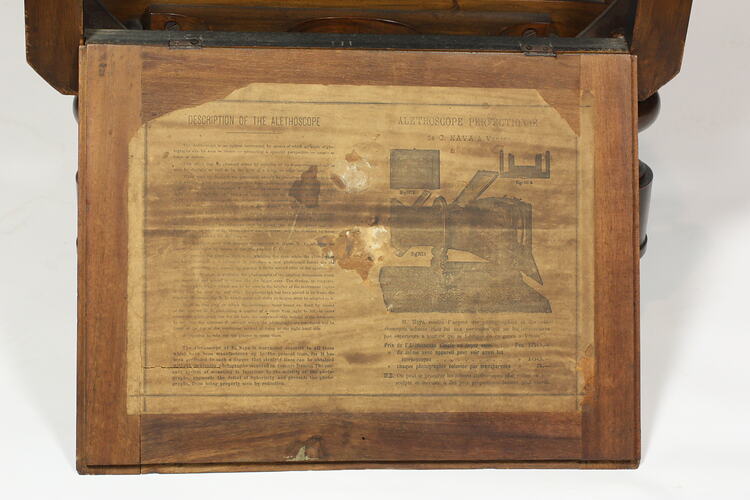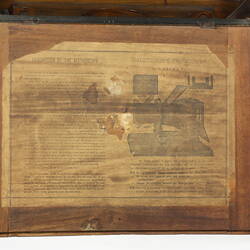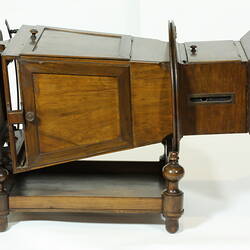DESCRIPTION OF THE ALETHOSCOPE
The Alethoscope is an optical instrument by means of which all kinds of photographs can be seen 'in riliveo' - presenting a splendid perspective - nearly as large as nature.
This effect may be obtained by reflexion or by transparency and can be seen by daylight as well as the light of a lamp, or other artificial light.
When used by daylight, the instrument should be placed upon a table or in front of a window. After the photograph has been introduced through the aperture G (Fig. N.I), the two reflectors E, F must be thrown open so as to cast powerful light upon the photograph, which is thus seen by the medium of reflection. To observe it by transparency, the two reflections must be closed and the door L thrown open to cause the light of day to pass through the photograph.
When the Alethoscope is used by night, a lamp should be placed at the aperture of reflector F so as to allow the photograph to be seen by reflection. To obtain the effect of transpondency, the reflectors must be closed, the door L opened and the lamp placed in front of it. These effects can, however, only be obtained by using photographs prepared for the purpose.
The spectator must look through the aperture A (Figure N.I) adapting the glasses to his sight by means of the two handles C.C.
To prevent the glare of light troubling the eyes, while the photographs are being changed, it is advisable to introduce a new photograph before the old one has been removed, namely by placing it in the second slide of the aperture G.
The Alethoscope is available for photographs of the smallest dimensions, which are magnified and placed 'in riliveo' like the larger ones. The frames or supports for those photographs, which are to be seen in the interior of the instrument (Fig. N.2) must be lifted up and when the photograph has been placed in its frame, the relative diaphragm (Fig. N.3) which opens and shuts on hinges must be adapted to it.
M is an iron ring on which the instrument turns round on itself by means of the handles B.B. (describing a quarter of a circle from right to left) in cases where the photograph has for its base the narrowest side instead of the broadest. In this case, the aperture G through which the photographs are introduced will be found at the top of the instrument instead of being on the right hand side.
D opening to take out the glasses to clean them.
The Alethoscope of C. NAYA is warranted superior to all those that have been manufactured up to the present time, for it has been perfected to such a degree that straight lines can be obtained in without employing photographs mounted on concave frames. The concave system of mounting is injurious to the solidity of the photograph, augments the defect of Sphericity and prevents the photographs, from being properly seen by reflection.
ALETHOSCOPE PERFECTIONNE
de C NAVA a Venise
Mr Naya rendra l'argent des photographies et des alethoscopes achetes chez lui aux personnel qui ne les trouveraient pas superieurs a tout ce qui se fabrique en ce genre a Venise.
Prix l'Alethoscope simple en noyer veine Fcs 150 -
" du meme avec appareill pour voir aussi les stereoscopes " 160 -
" chaque photographie coloriée par transparence " 5 -
N.B. On peut se procurer les meme alethoscopes, plus riches en bois sculpte et encruste a des prix proportionellement plus eleves
More Information
-
Keywords
-
Authors
-
Article types


